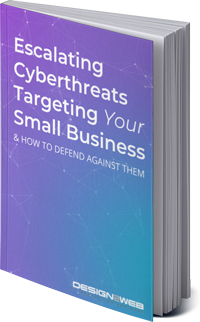Tag: Password
Blog
Passwordless Authentication: The Future of Secure Access
Written by: Jay H. Passwords have long been the standard method for securing digital accounts and systems, but their limitations have become increasingly evident in today’s complex threat landscape. From weak passwords to the risk of data breaches, the traditional reliance on passwords is proving insufficient to safeguard sensitive information. Enter passwordless authentication, a revolutionary approach that promises enhanced security
How to Fix Outlook 2013 Asking For Your Password Over and Over Again
Written by: Jay H. If you’re using Office 2013, you may have run into your Outlook application asking you to sign in over and over again, even when you enter the right credentials. This issue is annoying at best, but if you depend on emails for your work, it can halt and hinder your productivity. Luckily, you can fix this
Brute Force Attacks, Software Vulnerabilities, And Malicious Emails Behind Most Attacks
Written by: Jay H. Cyber attackers are successfully breaching organizations through brute force attacks, software vulnerabilities, and malicious emails, according to a new report from Kaspersky. Almost 90 percent of the incidents Kaspersky’s team responded to involved these three factors, providing insight into which attack vectors hackers are successfully using. Brute force attacks and software vulnerabilities each accounted for 31.58
CISA Releases List of Cybersecurity Bad Practices
Written by: Jay H. The US Cybersecurity & Infrastructure Security Agency (CISA) has released a list of cybersecurity bad practices. These practices are hazardous and put organizations at significant risk of cyber threats. Moreover, they are exceptionally dangerous for organizations that support Critical Infrastructure or National Critical Functions and technologies accessible from the Internet. The current list of bad practices
How To Secure Your Cloud Data
Written by: Jay H. Cloud technology provides many benefits, such as improved productivity, scalability, accessibility, and cost savings. However, many businesses worry that the cloud is more vulnerable to data breaches than on-premise servers. Truthfully, any computing environment is susceptible if you do not take proactive steps to secure them. Let’s go over how to secure your cloud data to
5 Must-Have Cybersecurity Measures Every Small Business Must Take
Written by: Jay H. Nowadays, cybersecurity measures are a must for individuals and organizations alike. Without them, cybercriminals can easily breach your network and steal, damage, or delete your invaluable data. If you think you are “too small” to be targeted by attackers, think again. Approximately 43 percent of all cyberattacks target small businesses, meaning you’re in the direct sight
You Can Now Go Passwordless With Your Microsoft Account
Written by: Jay H. Passwords have long been an inconvenient – but necessary – safeguard for everything in our online lives. We’re expected to use unique, complex passwords for every account or risk getting hacked. But now, Microsoft has announced that you can go passwordless with your Microsoft account. You can completely remove the password from your Microsoft account and instead
How Single Sign-On Can Improve Your Organization’s Security
Written by: Jay H. Cybersecurity basics rule number one is having strong, unique passwords for every site or application you use. However, managing passwords can be challenging given the magnitude of apps and websites employees use. Thankfully, there’s an easier way to enforce secure password policies in your workplace. Using single sign-on (SSO), you and your staff can enjoy the
How To Check Your iPhone For Compromised Passwords
Written by: Jay H. Password security is a topic of major concern nowadays. With over half of people admitting they reuse the same password across multiple accounts, just one data breach can give attackers access to your entire online life. Still, most people don’t take password security as seriously as they should. Thankfully, there is a quick and easy way
5 Network Attacks Threatening Your Organization
Written by: Jay H. Network attacks are growing threats businesses face. Although your network is necessary for your organization’s operations, when a bad guy gets in, they can wreak havoc. Luckily, you can learn about the different types of network attacks and defend your business against them. Types Of Network Attacks There are many types of network attacks, and the


